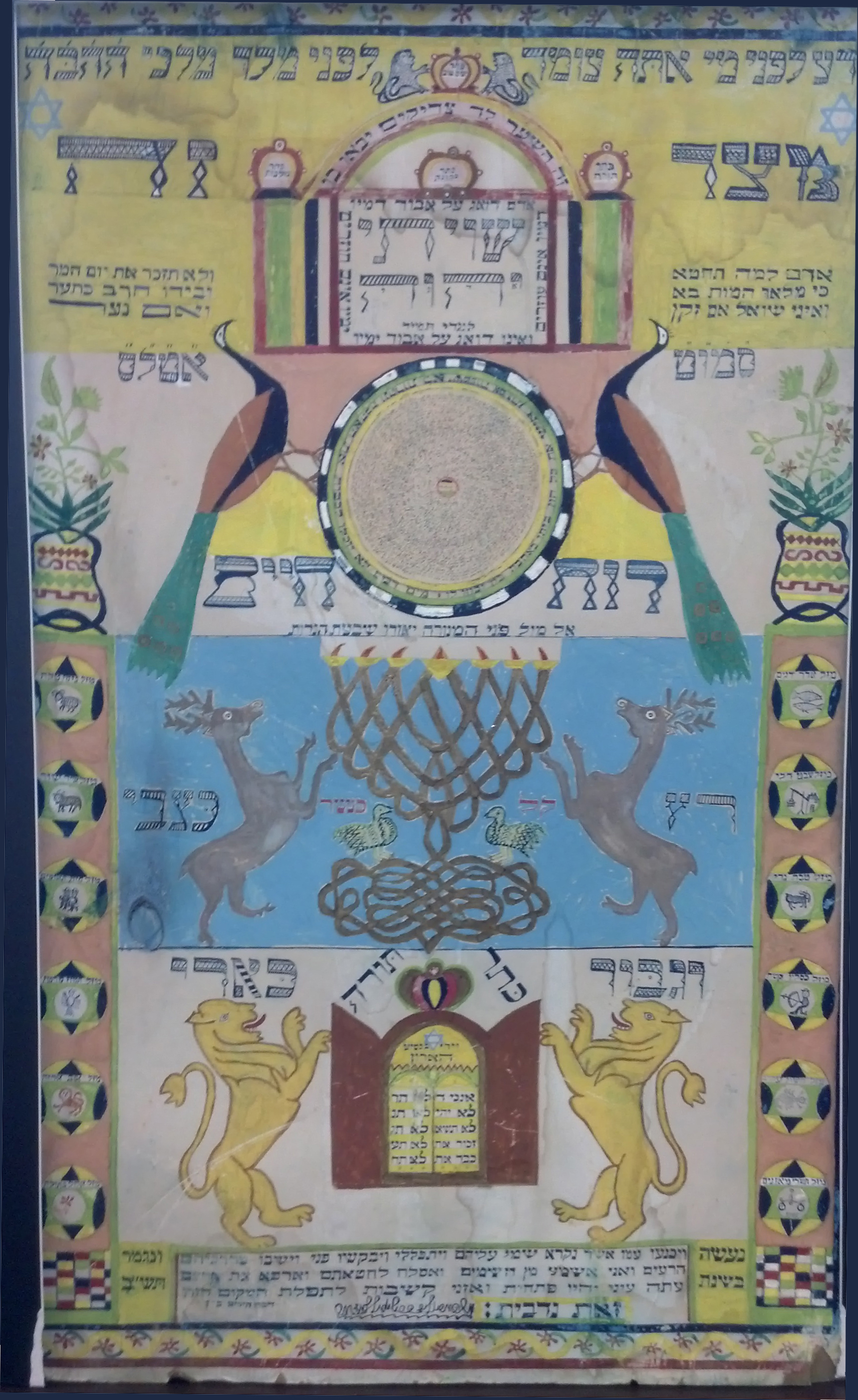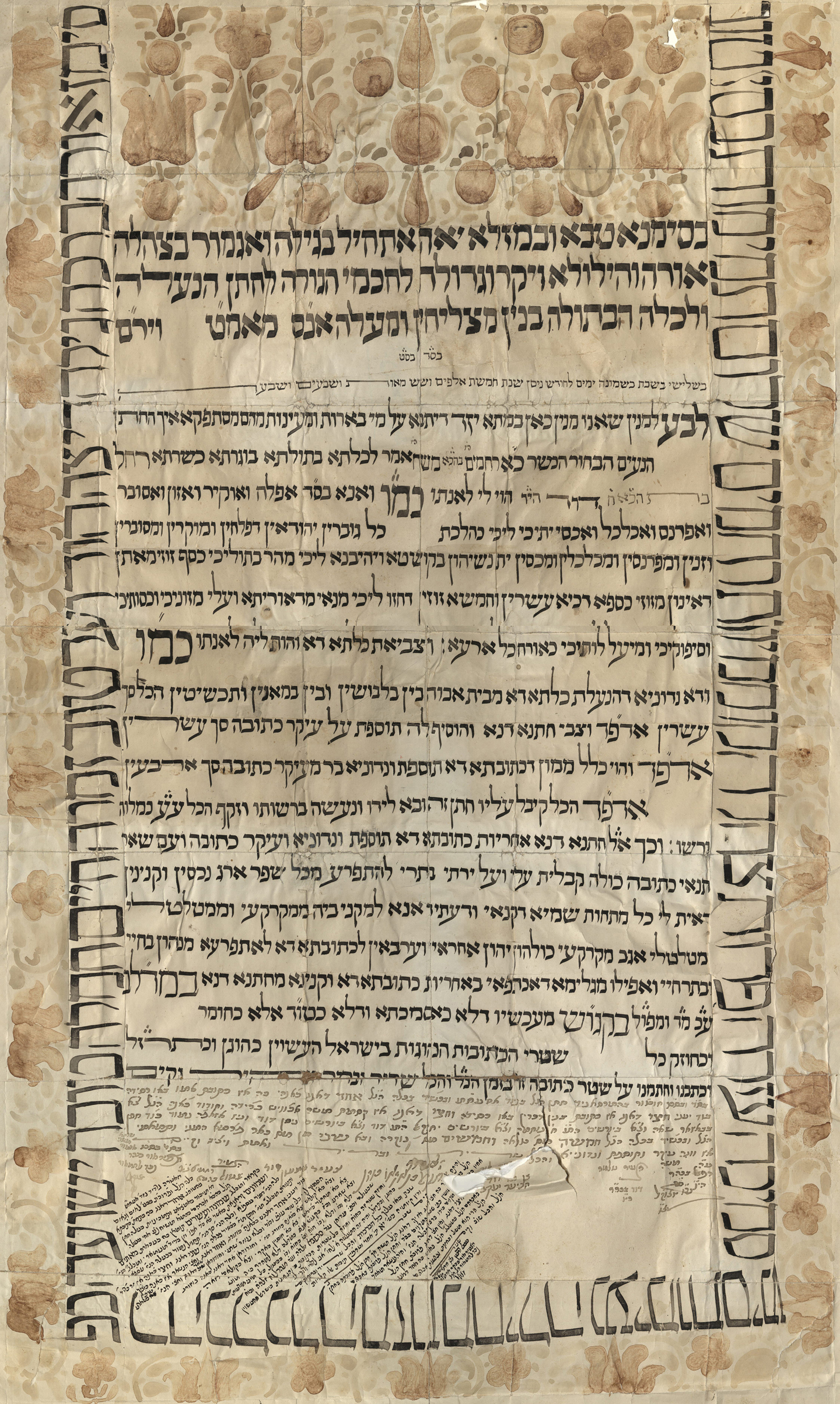Images of notable items recently acquired by the Judaica Collection at Yale University.
Eight drypoint plates and cover printed by Kathy Caraccio on Rives BFK paper. Of the six copies made, the Judaica Collection owns copy number one. The text accompanying the piece reads: "Golem was created in Prague over 500 years ago, only to be detroyed by its creator because it was thought to be unnecessary. Unfortunately, history has proved this a hasty decision."













































